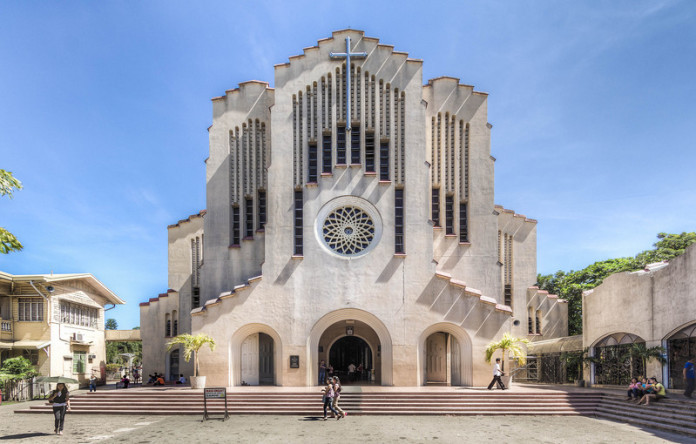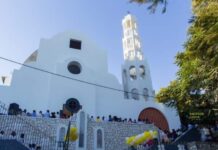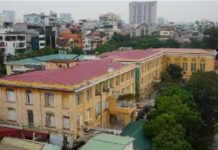The Redemptorists of the Province of Cebu in the Philippines celebrate the 25thanniversary of the foundation of their Unit, inaugurated in 1996. They launched the Silver Jubilee celebration on September 27 with the Eucharist presided over by Fr. Jovencio Ma, C.Ss.R, Coordinator of the Conference of Redemptorist of Asia and Oceania.
Celebration of September 27, streamed on the Facebook
Prophets of His Love – the official theme song of the silver anniversary of the Province of Cebu
The newest issue of “Reality” brings an interesting article by Fr. Colm Meaney, C.Ss.R, that presents the beginnings and development of the Redemptorist mission in the Philippines, started by the confreres from Ireland, that became Province of Cebu 25 years ago.
Silver Jubilee of the Province of Cebu
In December 1905, the first Redemptorist to reach the Philippines arrived by ship into Manila harbour. Fr Andrew Boylan was provincial in Dublin at the time, and he had decided to found a new mission in the Far East. In the years that followed, both Irish and Australian Redemptorists were appointed to the new venture. By 1928, a plan was agreed for their missionary efforts in the vast archipelago: the Australians would conduct missions in the north of the country, beginning in the capital Manila. The Irish would go south and evangelise in the central and southern islands. The Irish arrived in Cebu on June 30, 1906. As time passed, the north evolved into a vice-province of Australia, with both Aussies and Filipinos among its members. To this day, it remains a vice-province due to a lack of numbers. Meanwhile, vocations were greater in the south, so in 1996, what had been a vice-province of Dublin became the independent Province of Cebu (the second city of the country and the residence of the provincial). That means that 2021 marks the silver anniversary of the province.
At first, without monasteries of their own, the intrepid early missionaries were given the use of a centuries-old church on the island of Mactan, in the town of Lapulapu – named after the chieftain who had killed the explorer Magellan 500 years earlier. From that church, the Redemptorists went forth on their missions to neighbouring towns and islands. As the decades passed, they acquired land on various islands, eventually establishing 11 foundations (monasteries, churches, and retreat houses) on five islands.
During the early decades, following the tradition of the congregation since the time of St Alphonsus, parish missions were the chief apostolate. I had many fruitful years involved in parish missions. My predecessors were great men dedicated to their task. Here are some words of Fr Barney Casey CSsR, quoting a statement from a man in whose house he was staying during a parish mission: “Your work is the same as that of Jesus Christ.’ I still find great consolation in that affirmation.”
Another essential element of any Redemptorist mission soon began – devotion to Our Mother of Perpetual Help. It was an immediate favourite and is now a national devotion.
Later, other Alfonsian ministries were introduced: the giving of retreats to various groups: clergy, nuns, schools. (In the 1960s, three retreat houses were built in Cebu, Iloilo and Bacolod). Eventually parishes were accepted, comprising the villages around a particular monastery. The Redemptorists have been chaplains to the leprosarium in Cebu since before World War II.
By the early 1990s, vocations were in steep decline in Ireland but were steady in the southern Philippines. In addition, the vice-province of Cebu had decided to apply to become independent of Dublin. Almost 90 years after the Irish had arrived in the Philippines, the first Filipino provincial Fr Abdon Josol was elected.
The celebrations on becoming a province were memorable. We were honoured with the presence of a general consultor from Rome, Fr Joseph Tobin, and of the then Irish provincial, Fr Brendan Callanan, as well as many other distinguished guests – not to mention our faithful local supporters. We recalled our forebears in the congregation, especially those who had begun the mission in the early 20th century, enduring some challenging episodes. We recalled the struggles during the martial law years in the 1970s and 80s and its many victims, including our confrere, Rudy Romano. We thanked the Lord for the many blessings conferred through the years, and then we had a sumptuous meal followed by a cultural programme.
Earlier, the Redemptorist members had a simple ceremony in the grounds of our retreat house in Cebu. Each community from the various islands had brought a small bag of soil. A seedling was planted to commemorate becoming a province, and the soil from each community was mixed among its roots. I saw the mixing of the soil as representing two truths: that becoming a province was a common project, a united effort in which all played some part. The soil also was a reminder that we should be among the lowest, the most humble, and that being among them this new plant, the Province of Cebu, would flourish. The quarter-century since then has seen some fine achievements.
OUTREACH TO KOREA
One of the first accomplishments was opening a mission in Korea in 1991. Spearheaded by three priests, one each from Thailand, Brazil and Cebu, the mission has gone from strength to strength. It was an important undertaking for the fledgling province. The temptation might have been to rest on our laurels and concentrate on our already established ministries. But the lifeblood of any growing organism is to rise to the challenge of going further, being adventurous, taking risks. Not only was the new beginning in Korea symbolic of the innovative character of the province, but it has proven to be a fruitful strategy. Vocations in Korea are steady, and among their apostolates is a ministry to the large number of Filipino workers there.
In the area of formation (training seminarians), two regional projects deserve mention. The novitiate is located in the city of Lipa in Luzon, but it serves the South-East Asian region (including the Philippines, Thailand, Indonesia, Vietnam, Sri Lanka). Formators are appointed from these countries.
An even more ambitious project was setting up a Redemptorist theologate in Davao. This serves the Redemptorists and other congregations and is staffed by teachers from various groups (Redemptorists, Franciscan, Benedictine, lay, etc.) and also provides teachers for the local diocesan seminary.
As the regular ministries of the province continue year by year (parish missions, retreats, parishes, formation), there has been a steady stream of other initiatives. In Manila, the Redemptorists run the national shrine of Our Mother of Perpetual Help. It is truly a massive undertaking, with many thousands attending the novena each Wednesday. Confessions in many different dialects are almost non-stop. For several decades, the Cebu province has sent a confrere to help in Manila. For some decades too, a Redemptorist has also been among the chaplains ministering to the large Filipino populations throughout Italy. A confrere from Cebu assists the Singapore Redemptorists in a parish in Dalat, Sarawak (East Malaysia), while one man also works with Filipino migrants in rural Malaysia.
All in all, I think it’s fair to say that the Cebu province is flourishing and well deserves a big splash to celebrate its silver anniversary.
Fr Colm Meaney CSsR
The author, fr. Colm Meaney CSsR, is a native of Limerick city, Ireland; he went to the Philippines as a student and has spent most of his priestly life there.
Courtesy of: “Reality” December 2021.






